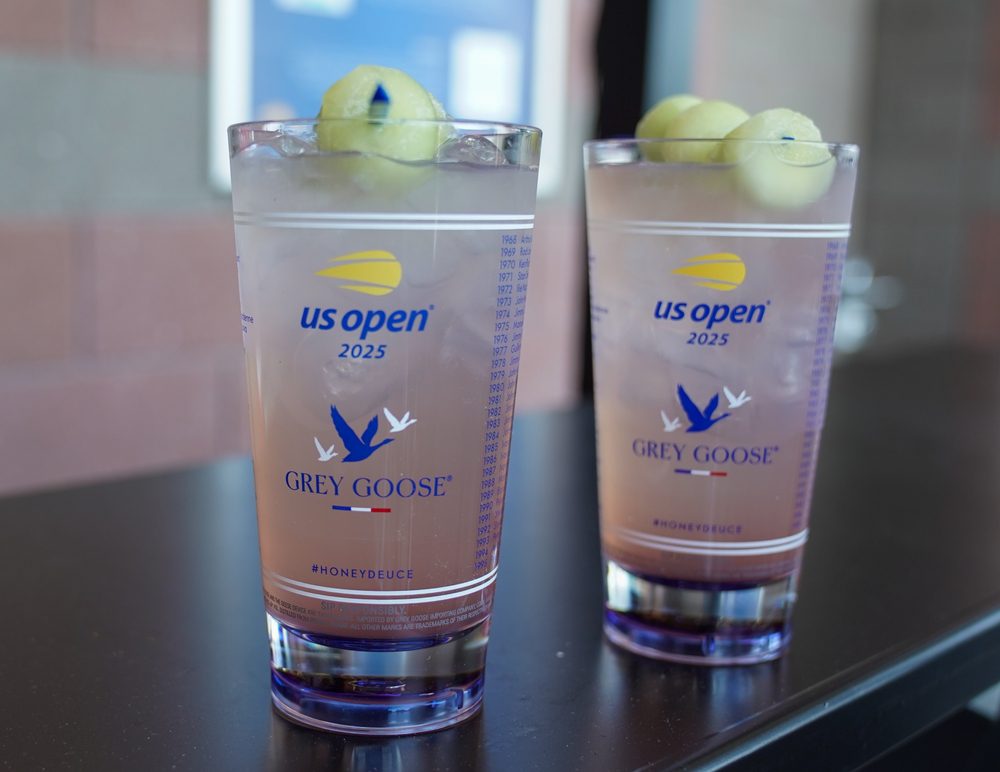Sometimes, it’s beauty before brains. Miller Brewing Co. and Coca-Cola Co. have both used packaging redesigns to set marketing strategy to reinvigorate flagship brands. Miller Lite hit shelves in January with a new logo, TV spots that update its classic “Tastes Great, Less Filling” tagline, and a slate of promotion events to get consumers playing with the 30-year-old brand.
“We wanted the packaging change to be the spiritual springboard of everything with marketing,” says Miller Lite brand manager Tom Bick. The relaunch “adds a swagger to us that’s been missing from the brand.”
Coke, meanwhile, is using a slim 8.4-ounce can to distribute 1 million-plus samples of Coca-Cola Classic this quarter as part of its “Coca-Cola … Real” campaign that broke in the U.S. in January and rolls into non-U.S. markets throughout the year. The sample can (similar to drinks like Red Bull and Coke’s own KMX) is a limited run for sampling only, although Coke is mulling whether to introduce it at retail. “We want to get the can out as much as possible to young opinion leaders and influencers,” says Steven Schiller, director on Coca-Cola Classic brand business unit. “It’s a very subtle, discovery kind of sampling.”
Coke also updated its flagship packaging, which stars in new print and TV ads for “Coca-Cola … Real.” “New packaging is a perennial impulse [for beverage brands] to get a contemporary feel that is familiar, yet fresh,” says John Rodwan, editorial director for research firm Beverage Marketing Corp., New York City. Coke’s sales rose about one percent in 2002, respectable given the overall slow growth of carbonated beverages, says Rodwan. Vanilla Coke’s launch last spring helped.
Miller Lite, meanwhile, needs a second wind. Volume sales fell a half-percent last year to 16 million barrels, a striking disappointment since light beer sales overall saw a healthy jump. (Bud Lite sales rose nearly eight percent to 37.5 million barrels for 2002, per Beverage Marketing.) Miller President John Bowlin stepped down in February, replaced by Norman Adami, who had been chairman-managing director of South African Breweries Ltd., which bought Miller from Philip Morris Cos. (now Altria) last summer.
“Even though Miller Lite isn’t growing as well as competitors, it’s still a big brand,” says Rodwan. “I don’t know if packaging is enough to turn it around.”
Milwaukee-based Miller has more up its sleeve. Miller has juiced its 2003 budget significantly to fund the relaunch, up from $109 million for January through November 2002, per CMR/TNS Media Intelligence, with an estimated $75 million allocated for promotion this year. The brewer found through its ongoing consumer research that its main target, 21- to 30-year-olds, thought the old logo was familiar but staid. “We wanted to reflect the energy of our core audience,” says Bick. “This isn’t just a package change; it’s a visual identity change.”
Miller tapped design firm Optima, Lake Forest, IL, which spent six months with Miller’s in-house research team to redesign the logo and craft plans for P-O-P, trucks and event signage. Miller tested four designs via mall intercepts, bars and the Internet, then tested the final design with consumers before rolling it out.
“Our plan was to start with the packaging, and meanwhile reinvigorate the brand,” says Bick. “Packaging is what consumers live with every day. We want to let that energy trickle into all that we do.”
Promos will unfold as “episodes of events” with a new push every month or so. Events range from a Spin the Bottle insert in February’s Playboy (game pieces in the magazine also appear in bars for “spinning parties” in seven cities, hosted by Playmates) to activities at NASCAR races featuring Miller-sponsored Rusty Wallace.
An on-pack sweeps for Miller Lite and Miller Genuine Draft broke in February, timed to NASCAR’s Daytona race. Peel-off game pieces on 24-ounce bottles award $25,000 when Wallace — who drives car No. 2 — wins the race at the date and location featured on that game piece. C-store displays are tagged “Take 2 to Go,” pitching two single bottles, multi-packs or a multi-pack and bag of chips (PROMO Xtra, Jan. 14). Miller added the 24-ounce bottle in January to capture c-store growth; that single-serve is the fastest-growing SKU for beer, says Bick.
A tie with Sports Illustrated’s Swimsuit Edition — a tradition for Miller since 1997 — inserted posters of model Sofia Vergara in swimwear designs based on Miller’s new look. Six posters were randomly inserted in the Feb. 6 issue to prompt fans to collect multiple copies of SI. The swimsuits themselves are destined to be sweepstakes prizes, but details weren’t set at press time. Lead agency Ogilvy & Mather, New York City, and promo shops Zipatoni, St. Louis, and Fusion 5, Westport, CT, collaborated on the relaunch.
Meanwhile, Atlanta-based Coke puts its package center stage in the estimated $50 million “Coca-Cola … Real” campaign. Sampling teams cruise several dozen cities in subtly branded vehicles to visit malls, concert venues, parks and sporting events to hand out the slim sample cans. Coke’s own sampling team, dressed in black, visits clubs and, with owners’ permission, asks DJs to rev the crowd and give away a few cans. Sampling runs through March via Ignition, the Manchester, VT-based shop that handled Olympic Torch Run sampling for Coke last year. Coke also piggybacks ongoing sampling of partner Universal Music Group to distribute additional cans alongside the music CDs that UMG hands out.
Coke chose the slim can for sampling because the contemporary design puts Classic in a new light. The slim can is similar to the design used for energy drinks, popular among teens and young adults. “We won’t define ourselves narrowly as a soft drink or an energy drink,” says Schiller. “We’re a refreshment beverage. Some people think of Coke as the original energy drink; it’s an element of our history, and people tend to go there without prompting from us.”
Meanwhile, the traditional can’s updated ribbon, its script logo and signature red feature prominently in TV, print and outdoor ads that broke mid-January. (Coke began weaving ribbons into TV advertising last fall to presage “Real” ads.) The campaign begins in the U.S. and adds markets throughout the year with promotions, one-to-one marketing, and property sponsorships including NASCAR and NCAA. The global tag gets local executions.
The new design — Classic’s first revisions since January 2000 — brings back the ribbon, updated as a series of intertwined ribbons with a thread of bright yellow. The script logo is lighter, the red background is more robust, and “Classic” is added to all SKUs. Coke tested designs with consumers worldwide. The Desgrippes Gobe Group, New York City, handles design for flagship and sample packaging.
Through the first-quarter, Coke has run celebrity-studded TV spots, print and radio with ad and promo activity at cokemusic.com. Coke has also worked with Los Angeles-based UMG to launch “Coke FM,” whose 60-second radio spots will feature UMG artists. WPP’s Berlin Cameron and IPG’s McCann-Erickson, both New York City, handle general-market ads.
When mulling sampling, “we talked about all the ways we’re touching consumers from a sensory standpoint. The ads are visual and auditory, but sedentary,” says Schiller. “The sample cans give people a tactile way to experience the brand.”
Games printers play
Marketers often tweak packaging for short-term promos. Coca-Cola Ltd., Toronto, used heat-sensitive ink to print Harry Potter trivia questions on two-liter bottles; fans had to chill the bottles to make the answers appear. The limited-edition labels featured nine Potter characters and ran in October and November 2002, timed to the theatrical release of Harry Potter and the Chamber of Secrets.
“Our packaging is our billboard. It has to jump off the shelf,” says Arlene Lebovic, manager of national programs and innovation, Coca-Cola Ltd. “We put a lot of consideration into packaging because it goes on millions of packages.”
Last year Lebovic saw a Diet Coke promo in the U.K. that used heat-sensitive ink, so she tracked down the printer, Sonoco, and asked for a chill-and-reveal campaign. It was a simple matter to change some graphics and ink, at very little cost. P-O-P featuring Potter characters supported the special packaging. “The property was so strong we didn’t need an [additional] promotion element,” says Lebovic. Toronto promo shop Square Peg handled.
Some costly printing technologies make sense for short-term promos. “Holographic film has been around for awhile, but it’s very expensive, so it’s hard to justify for ongoing packaging,” says Rick Morse, director of global marketing for consumer packaging at Hartsville, SC-based Sonoco. “We’re seeing clients use it for limited-time promotions.”
Candymaker Cadbury Trebor Allen, Toronto, used holographic film on Cadbury Crunchie bars to draw teens. A six-month run boosted sales as well as traffic to crunchie.com. “Cadbury was keen on the promotion and didn’t give cost a second thought,” says Sonoco account executive Bob Scobel.
Sometimes the package is the prize. Coke’s Minute Maid division ran a Potter-themed Find the Golden Snitch Pouch instant-win sweeps on Minute Maid Coolers and Juicers. Players looked for one of two golden pouches to win a trip to London. (For you muggles out there, the snitch is the golden ball that Harry chases when playing Quidditch.) An under-the-cap component ran on juice bottles. Momentum North America, St. Louis and Atlanta, handled.
On-pack games remain popular for traditional categories like soft drinks and candy. It’s common now to send players to a Web site, with winning numbers picked at random online, rather than printed and seeded on-shelf. That’s cheaper and more secure, and frees up marketers’ (and printers’) attention for graphics.
Games with on-pack codes add a step to the printing process. Last year, Sonoco used ink jet printers to include individual codes inside packs of Juicy Fruit gum. Consumers checked the code against winner numbers at Wm. Wrigley Jr.’s Web site to see if they won. Marketers like inkjet promos because they don’t slow production lines.
Sometimes package-based promos seem due for a redesign. As General Mills expanded its venerable Box Tops for Education program to Pillsbury brands (October PROMO), it has moved beyond cereal boxes to soup cans, dough tubes and frozen foods — not exactly “box top” material. “Ideally, they’d call it something else, but consumers understand it now,” says Jonathan Asher, president of New York City design firm FutureBrand Coleman, who has casually discussed Box Top changes with Mills staff.
But Minneapolis-based Mills won’t change the name despite the misnomer. “What we hear from consumers is that the only way we can make the program better is to just keep adding brands,” says spokesperson Allegra Sinclair. “They don’t care what it’s called as long as they can find that little pink logo.”
After all, it’s not just what’s inside, but what’s behind a package that counts.
 Network
Network

